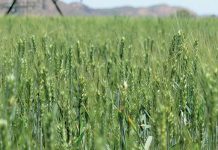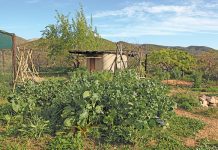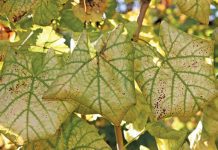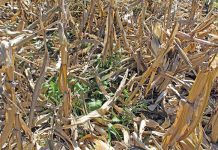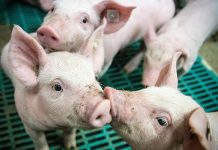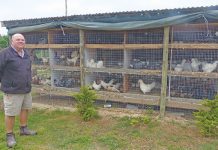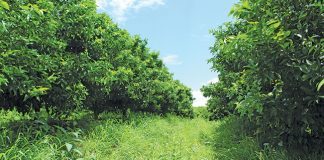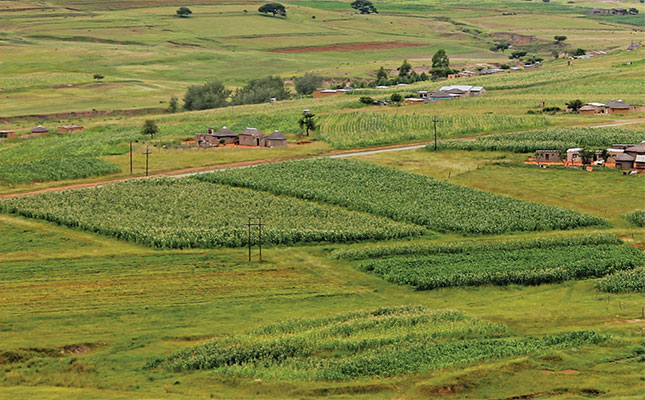
The principles and advantages of implementing conservation agriculture
by Dr Hendrik Smith (CA facilitator with Grain SA)
South African farmers at all scales of production, together with the support of other stakeholders in the agricultural sector, have two major responsibilities: to produce enough food and fibre for their families and country, and to conserve the environment in which that food and fibre is produced.
Farmers are key to ensuring that the natural environment is protected. We must see nature as our friend and understand and use it correctly. If we fail to do so, in future we will no longer live in an environment conducive to food production.
Ensuring food security and a healthy environment is achieveable through conservation agriculture (CA), and must be promoted by both farmers and stakeholders in the agriculture sector.
Grain SA has taken on the task of helping South African farmers at all production scales to achieve these responsibilities, by explaining and promoting the principles of CA and its adoption.
The basics
CA comprises three principles and practices that must be implemented simultaneously and optimally:
Stop or minimise tilling: Tilling degrades and ultimately kills the soil. Adopt minimum tillage, or even no-till, and use manual, ox-drawn or machine-driven planters.
Increase the organic matter content in soil: Leave growing live plants in the soil and decomposing crop residues on the soil surface. Soils should never be left uncovered and exposed to direct sunlight, rain and irrigation water.
Adopt a rotation system of three or more crops: This creates and encourages diversity, which is beneficial to soil life.
Multiple benefits of CA
These include:
- Sustainable soil;
- Better water retention;
- Better nutrient content;
- A reduction in pests and diseases;
Increased crop yield without increased fertilisers and other inputs.
Basic guidelines for introducing and supporting conservation agriculture among smallholder farmers
by Njabulo Buthelezi (Mahlathini Organics)
The popularity and implementation of CA among smallholder farmers on communal land in KwaZulu-Natal’s Emmaus, Putshini and Zunckels areas has grown rapidly. In the past two to three years, the number of CA farmers in these areas has increased from 28 to 84.
These farmers are members of a number of smallholder cooperatives, and through learning and implementing CA, they – as well as a number of non-CA farmers – are becoming increasingly aware of what CA is and what it can achieve.
Many CA farmers in these areas changed from conventional tillage methods because they were continually experiencing poor production results. Instead of abandoning farming altogether they chose to implement the more sustainable farming methods they had learned from the likes of Grain SA, Mahlathini Organics and other organisations.
For the successful promotion of CA, it is important that agricultural extension officers and CA farmers share their knowledge in a practical and encouraging way. Conventional tillage farmers should be gradually introduced to the basic principles of CA, and not bombarded with a deluge of technical information that could frighten them off.
A bottom-up approach must be taken, and promoters of CA should not simply share their knowledge and walk away, abandoning their students. Instead, they should provide ongoing advice and support, listening to and appreciating the challenges that farmers may experience during the changeover to CA.
In addition, it is important to remember that these principles are not set in stone, and each farmer will adopt them in accordance with his or her individual farming conditions. Some fundamental aspects of CA can be bewildering for those new to the practice.
They include:
- The selection of suitable crops from a wide variety of seeds;
- Knowledge of how and when to plant;
- The time those crops will take to reach full yield.
CA support companies and organisations should help potential and existing CA farmers to understand these aspects.
It is useful for CA farming co-operatives to regularly meet and share their knowledge and experiences with one another.
Those farmers new to CA should not be afraid to ask any questions or offer any advice they feel is relevant. CA farmers must work together to improve themselves both individually and as a group.
Farmers moving into CA should start small and grow as their knowledge and resources permit. This will allow them to gradually see and appreciate the positive differences that CA has over conventional tillage farming. Smallholder farmers should not expect huge changes overnight.
Proper and effective CA implementation takes years, but the benefits, even though hardly noticeable initially, will grow, allowing CA farmers to continue producing food and fibre sustainably into the future.
CA farmers must be ambassadors for CA. Co-ops should regularly invite small groups of conventional tillage farmers to visit and learn.
This will cause a ripple effect. Even in the Emmaus, Putshini and Zunckels areas I am expecting there to be around 1 000 CA smallholder farmers within the next five years. The seed of CA must be planted among farmers everywhere.
Grain SA’s efforts to promote and support conservation agriculture among smallholder farmers in KZN
by Jurie Mentz (provincial coordinator: KwaZulu-Natal with Grain SA)
Grain SA alone cannot sufficiently promote and support CA among KwaZulu-Natal’s, often resource-strapped, smallholder farmers.
Last year, Grain SA began approaching major agricultural input companies and research organisations and explained to them our plans for having CA widely adopted by smallholder farmers on communal lands in KZN. The Agricultural Research Council (ARC) was the first to support our vision, followed by agricultural products company, Monsanto, and fertiliser manufacturer, Omnia.
Several other organisations and agricultural companies have begun to show interest. We asked those offering support to reduce the prices of the inputs necessary to begin implementing CA.
While Grain SA would provide ongoing mentorship, Monsanto, Omnia and the ARC committed to providing material support so that interested KZN farmers would pay only R1 500 for:
- Four bags of fertiliser;
- Two bags of nitrogen;
- 4l of glyphosate herbicide;
- Some pesticide and fungicide; and
- 10kg of Roundup Ready maize seed to cover approximately 1ha of maize production.
With these inputs available, Grain SA encouraged new and existing CA smallholder farmers to begin by planting their small lands using handheld planters for low-cost, yet still accurate, seed placement.
Unfortunately, the drought during the 2014/2015 summer season has had a negative impact on crop production. Despite this, Grain SA looks forward to much-improved results during the 2015/2016 summer season. The ARC and the private sector input companies have indicated that they want to grow this CA promotion and will support it again next summer.
I urge all smallholder farmers interested in CA to join study groups where they can share and learn. Study groups can also serve as centralised points for the purchase and delivery of CA crop production inputs.
Selecting the appropriate seed for conservation agriculture farming
by Reggie Mchunu (agronomist with Pannar Seed)
While farmers lack control over many aspects of their operation, they have control over the seeds they plant. Those new to CA must become aware of the large variety of seeds available to them before selecting those they think will suit their operation. All seeds have traits suited to particular production conditions and methods.
This diversity should not result in confusion; rather, farmers must approach individuals such as mentors and extension officers for advice. It is essential that farmers obtain sufficient knowledge and understanding before making decisions.
A farmer should consider the following:
- He or she must regard a land as an income-generating entity. No matter how advanced or expensive a seed variety is, it must be given the best production environment possible for it to achieve its full yield potential and quality. This means considering the soil type and the correct weed, pest and disease controls.
- The usage of genetically modified and/or non-genetically modified seed calls for varying management practices. For example, glyphosate herbicide can be safely sprayed over Roundup Ready seed, but not over non-genetically modified crops.
- Different seed is available for different growing season lengths.
- Every seed variety has an ideal plant population. A farmer should be aware of the population of the seed being planted. Planting too many of one seed variety will stunt production, while planting too few seeds in any given land will result in sub-optimal yield. Consider whether a chosen maize variety will produce single or multiple cobs. If lodging of a maize crop is a concern, a farmer should choose seed varieties with good standability.
- Crop rotation is important. It breaks pests and disease cycles and contributes to healthier soils, which in turn help to increase yield. Sugar beans are a good rotational crop for CA smallholder farmers. They fix nitrogen in the soil, can be eaten at home or sold for additional income, and can even be inter-cropped with maize.
- Finally, a farmer should check on his or her lands daily. If not, it is unlikely that high yield will be achieved.
An optimal model for conservation agriculture utilisation among smallholder farmers
by Erna Kruger (Mahlathini Organics)
Around 73% of active smallholder crop farmers on traditional authority land in South Africa consider maize production their primary agricultural enterprise, and want to generate income that goes beyond satisfying their home needs.
Mahlathini Organics has developed a farming system aimed at non-commercial and semi-commercial smallholder crop farmers who want to implement CA practices.
The system aims to, among others:
- transfer the knowledge and skills for appropriate cropping practices using technology and innovation;
- adapt the system to the scale and resources of each smallholder cropping enterprise;
- facilitate agricultural supply and support services;
- promote access to the production resources and markets that large-scale crop farming enterprises have access to;
- improve land preparation, planting and crop management systems and crop protection systems;
- encourage smallholder farmers to become part of a farmers’ organisation for the purposes of knowledge-sharing.
These farmers could form savings and credit groups, enjoy the benefits of bulk buying power and speak with a single voice when highlighting concerns to government and input suppliers.
The smallholder system can also give participating farmers access to land preparation contractors, contract harvesters and proper crop storage and marketing facilities.



